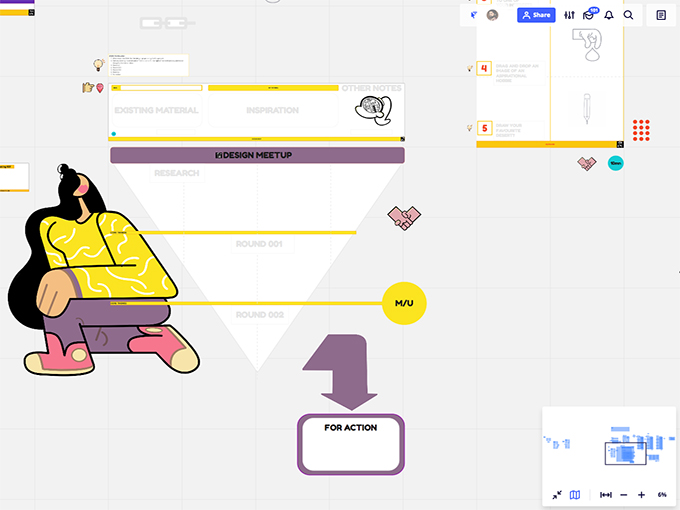Working from home with your kids, roommates or pets (or all three) clamouring for attention, potential layoffs looming and uncertainty around deals isn’t exactly the ideal condition to be thinking about developing a new show—which may or may not bring in new revenue until 2022, at the earliest. Yet several development execs are grappling with not only developing amid uncertainty, but struggling to develop remotely.
You need a process in place
While the process of development may seem like a lower priority, especially as more companies figure out where to find savings and questioning whether they should be looking at government subsidies or furloughing staff, Heath Kenny, the chief content officer at Mercury Filmworks, argues that development is about the future of the company. While a prodco with existing projects in place can sustain itself throughout a crisis, once it abates, it will be faced with new challenges—particularly those that carry staff forward project-to-project.
“I’m a big believer in the before and after of this virus and I think development teams are always forward focusing. They need to be thinking about the future of the company, and it’s our responsibility to keep moving and keep preparing what comes next,” says Kenny. “[At Mercury] all first phase development will keep going. Anything that is in later phases, we haven’t had any signs from our clients that [they’re] stopping or slowing down, so why should we?”
Kenny says producers need to do more than just schedule a call with their team and partners to get real work done on a project in development. Creativity doesn’t necessarily thrive when left alone.
“If you want to get the deep work done and the real work done, you need to have a genuine process—like a workshop process or a facilitation,” says Kenny.
Kenny is no stranger to working remotely: he lives in Paris and the entire Mercury team is based in Ottawa, Canada. To facilitate work across the Atlantic, he has established a strong workflow process involving virtual whiteboard programs Miro (pictured) and Mural.
When something needs to be completed or worked out in the development of a TV series, Kenny and his team will gather on a virtual whiteboard meeting. No meeting is ever set without a specific purpose and expectations lined out ahead of time, and each session is set with a concrete time-limit.
“All of this is happening live while we’re on a call, so it allows us to make genuine creative leaps forward even if we’re not in the same place,” says Kenny.
It’s helpful to know when to pivot on something that’s not working, or digging in when someone has an accidental creative discovery, he adds. There are free webinars and YouTube channels people can look up that offer creative brainstorming tips and tricks.
Of course, this is just a stop-gap, and while a lot can get accomplished digitally, there’s no replacement for face-to-face meetings . “I think a mix of both is the way forward because I think what we learned working remotely is we learned to listen better because tools like Zoom encourage us to speak then listen, then when we speak again it’s based on what we heard, not on what we were waiting to say,” says Kenny.
It doesn’t diminish the quality
While the pandemic has created an unprecedented situation, development can thrive in a remote environment, says Gary Milne, Zodiak’s head of content development.
Based in the UK, Zodiak’s kids division is in active development on four projects spread across the globe, and the company is no stranger to working over video chat.
“It’s kind of freaking me out how simple it is for us to be connected,” says Milne. “One of our projects we partnered with a South Korean animation studio and they brought their work to MIPTV [in 2019], which is when we first met them. But just by virtue of them being so far away, the rest has been done remotely.” Indeed, one project in the works with a Canadian prodco, Milne says he’s only met the writer in person, and hasn’t had a chance yet to get a face-to-face with the designers.
He emphasizes that since many in the kids industry have done development remotely before, at least partially, it can be done, and done well. It’s important to remember that just because everyone is working from home now, the quality of the projects won’t slip either as no part of development is really hindered by remote work—it’s not like post-production, which has a lot more in-person requirements.
To keep all of this going remotely Milne has a few tips. First, video calls are key. It’s essential to see people’s reactions and facial expressions when new ideas are being discussed, especially if those ideas are then being pitched to a broadcaster. If it’s just a voice call, “you don’t have that nuance, they can’t see your face, as well as the visuals itself,” says Milne.
He also discusses notes on writing via video call before sending them over to avoid messages getting lost in translations. It’s a narrow leap between getting a slightly “moodier” character and one that’s downright angry, after all.
And while Milne would usually see his UK-based colleagues daily at the office, he’s organized water cooler chats to help fill that void. He points out that the office dynamic offers the opportunity to walk over to a colleague and even just voice your own thoughts out loud, which could help you decide on what a setting needs to look like or how a minor character will be worked in when otherwise you would have struggled with that for weeks, sitting at home by yourself.
“My colleagues and I set up time to talk on Skype, not necessarily about work,” says Milne. “Things come out of absolute random chats that you won’t get if you’re constantly sat alone in a room.”






















